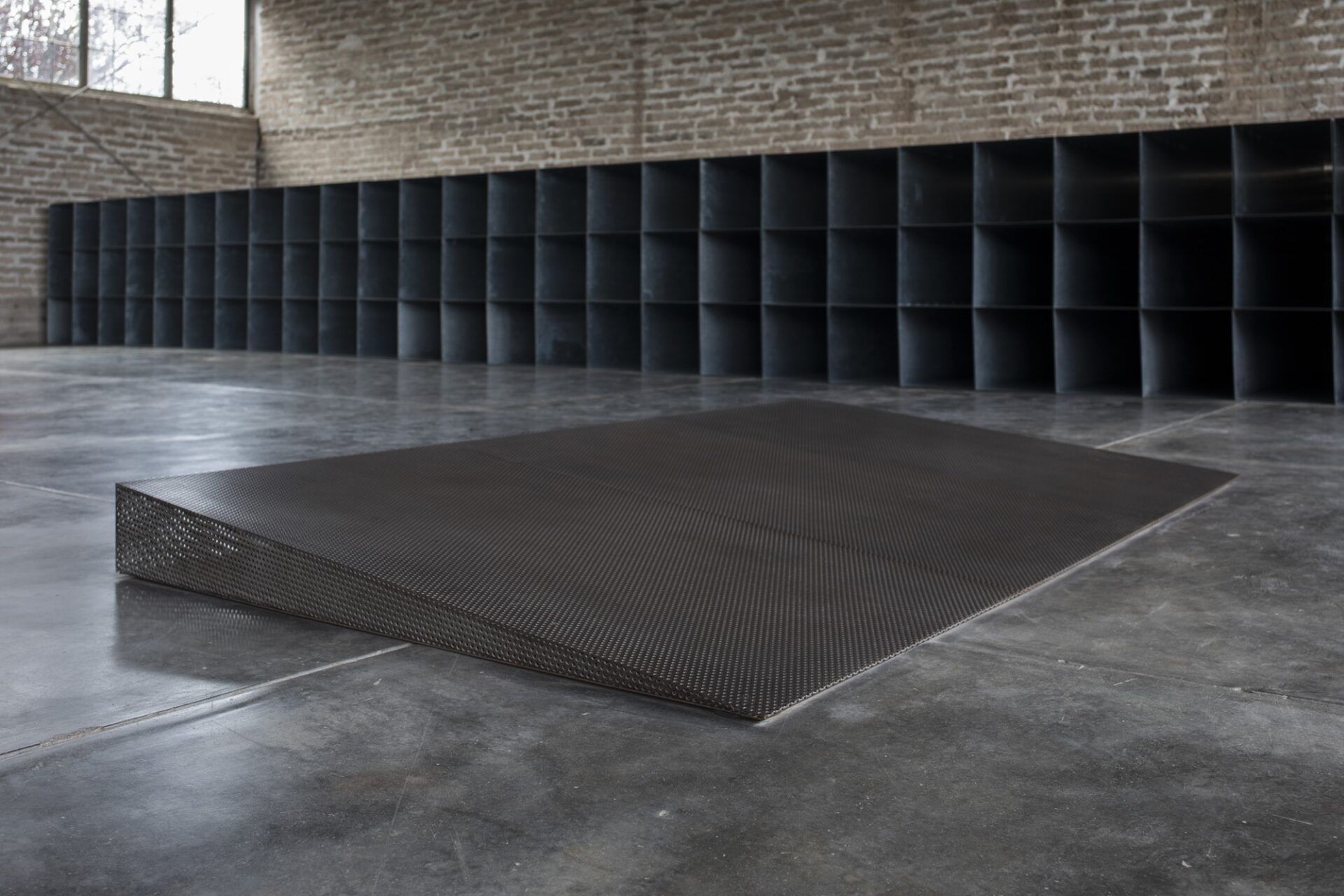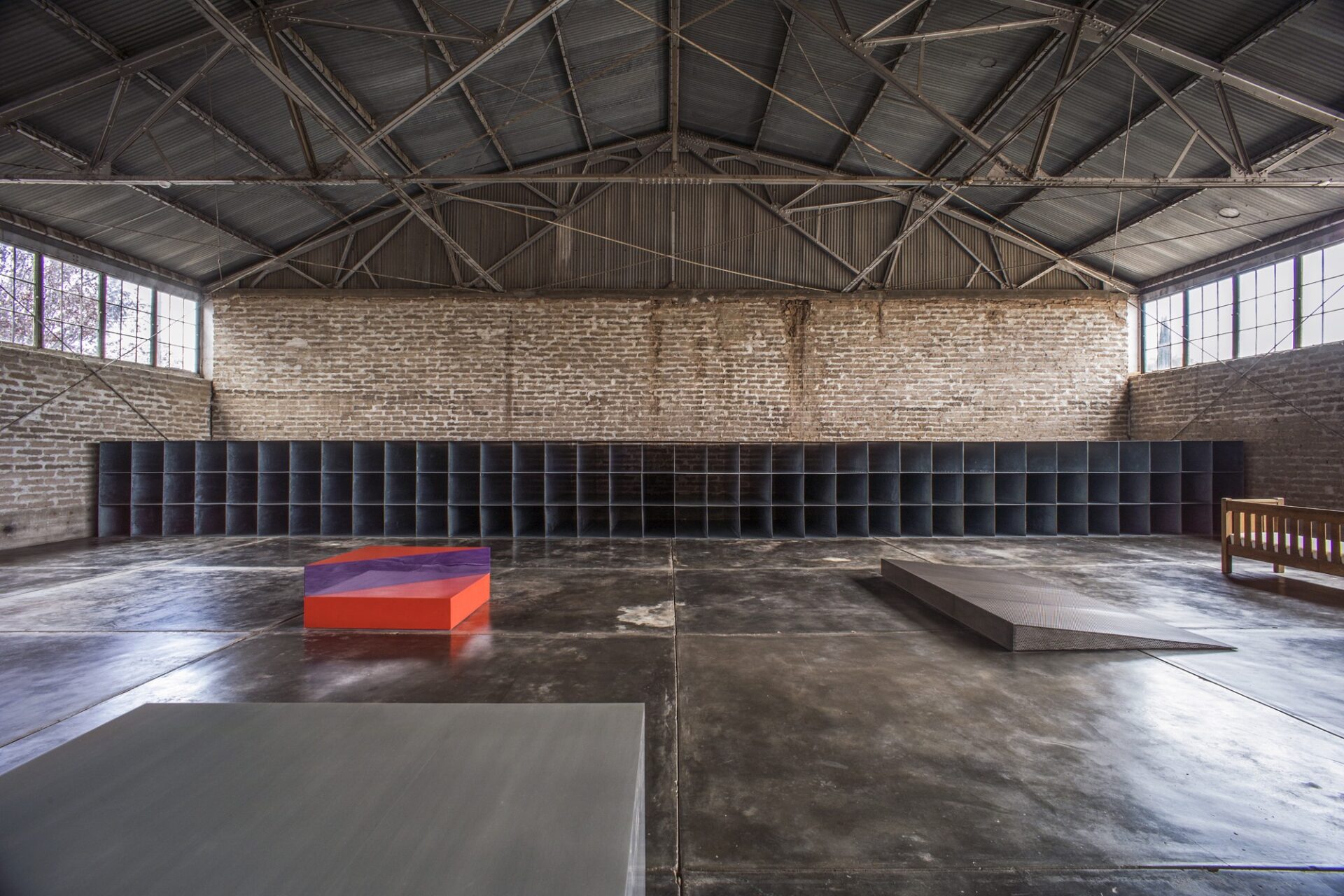In a 1971 interview, Donald Judd said that the height of this piece (eight inches) “is very important,” continuing to say that “I thought if it was too flat, it would just lie down on the floor, which is the same objection I have to painting.”1 He also noted that “the pierced metal has to do with opening up the surface like the plexiglass [acrylic sheets]. Obviously, by piercing it one can see into it. The wedge relates to a parallelogram, but it’s made to be a very low piece.”2
Besides this work, Judd made only a handful of pieces in perforated cold-rolled steel, including works with the same wedge shape and dimensions.


